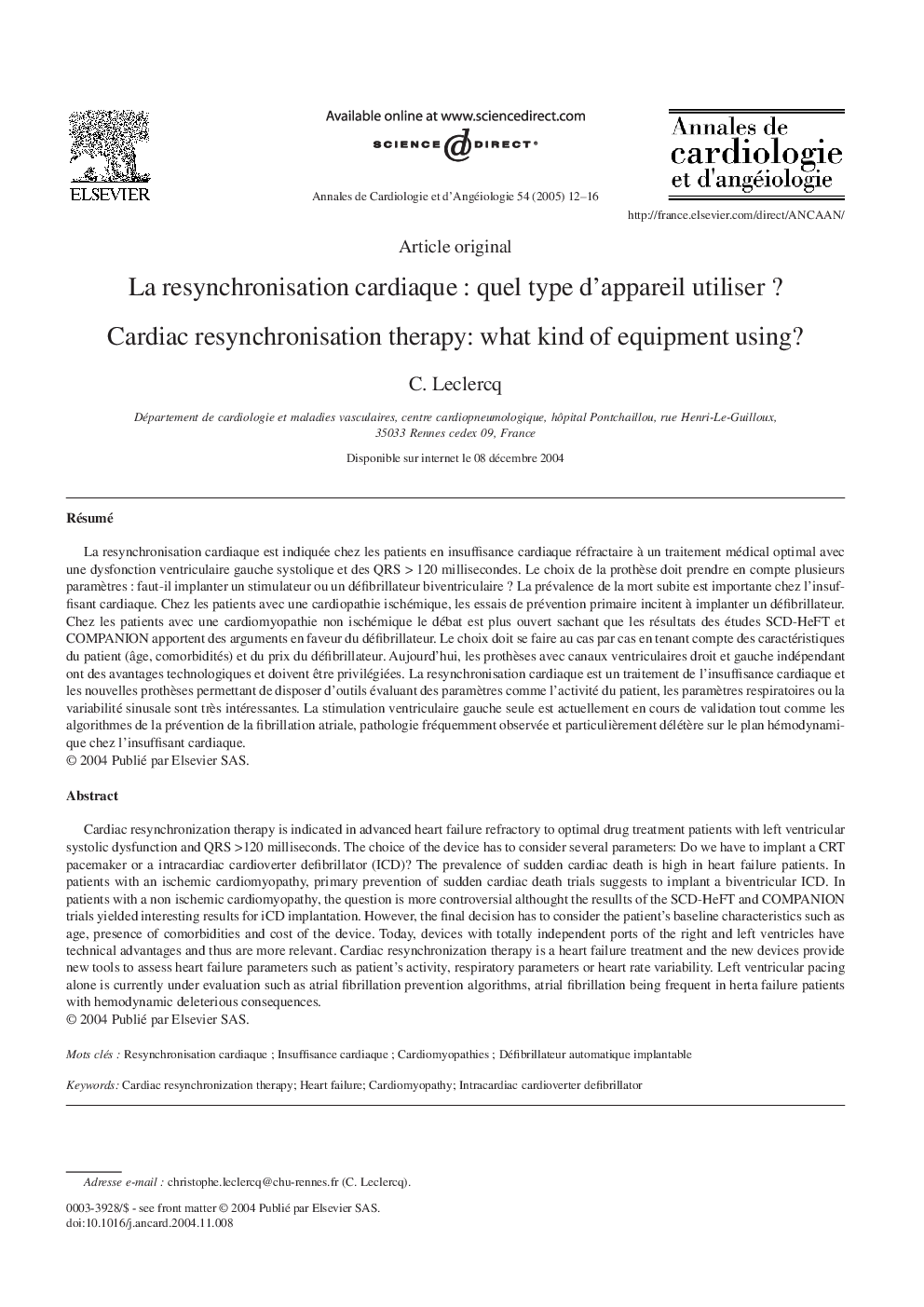| Article ID | Journal | Published Year | Pages | File Type |
|---|---|---|---|---|
| 9157239 | Annales de Cardiologie et d'Angéiologie | 2005 | 5 Pages |
Abstract
Cardiac resynchronization therapy is indicated in advanced heart failure refractory to optimal drug treatment patients with left ventricular systolic dysfunction and QRS >120Â milliseconds. The choice of the device has to consider several parameters: Do we have to implant a CRT pacemaker or a intracardiac cardioverter defibrillator (ICD)? The prevalence of sudden cardiac death is high in heart failure patients. In patients with an ischemic cardiomyopathy, primary prevention of sudden cardiac death trials suggests to implant a biventricular ICD. In patients with a non ischemic cardiomyopathy, the question is more controversial althought the resullts of the SCD-HeFT and COMPANION trials yielded interesting results for iCD implantation. However, the final decision has to consider the patient's baseline characteristics such as age, presence of comorbidities and cost of the device. Today, devices with totally independent ports of the right and left ventricles have technical advantages and thus are more relevant. Cardiac resynchronization therapy is a heart failure treatment and the new devices provide new tools to assess heart failure parameters such as patient's activity, respiratory parameters or heart rate variability. Left ventricular pacing alone is currently under evaluation such as atrial fibrillation prevention algorithms, atrial fibrillation being frequent in herta failure patients with hemodynamic deleterious consequences.
Keywords
Related Topics
Health Sciences
Medicine and Dentistry
Cardiology and Cardiovascular Medicine
Authors
C. Leclercq,
